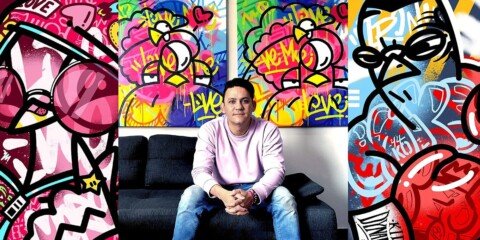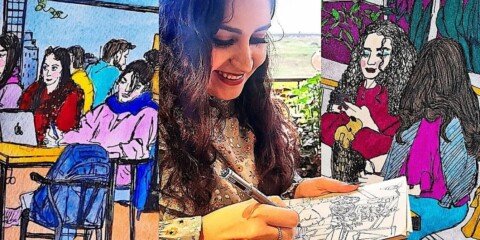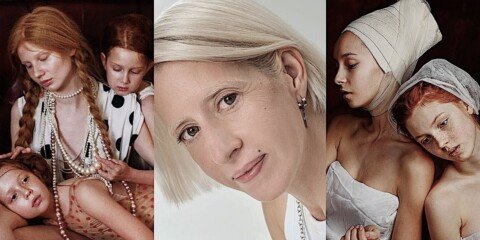In this heartfelt conversation, we meet Bonnie Brooks (@Brooksgallery8), an accomplished painter whose work moves gracefully between detailed realism and expressive abstraction. Having dedicated over 30 years to her craft, her work is deeply rooted in faith, nature and a profound appreciation of beauty. Her richly layered oil landscapes and vibrant abstract pieces offer more than just a visual experience; they reflect her spiritual journey and testify to the power of creation. In this interview, Bonnie opens up about her artistic journey, her creative rituals, and the profound purpose behind her work, offering insight and inspiration to anyone who believes in the transformative power of art.
🟥 Can you share a bit about your background and the journey that led you to becoming an artist?
My passion for art was nurtured from a young age. My mother introduced me to the transformative power of art through weekend visits to the New York Art Institute and neighboring museums. At just eight years old, I was selected from numerous students across schools to attend advanced art courses at Buffalo State University, cementing my path as a lifelong artist. My education extends beyond the classroom, enriched by extensive travels across Europe and the U.S., where I have studied diverse art forms and drawn inspiration from the world’s landscapes and cultures.
🟥 Was there a defining moment or experience that solidified your decision to pursue art seriously?
A defining moment in my decision to pursue art seriously came during middle school when I had a fabulous art teacher who greatly influenced me. She taught me so much, nurtured my passion for art, and even chose my college for me. Her impact on my life was profound, shaping not only my artistic skills but also my future. After college, I had the incredible opportunity to teach in her classroom while she was on maternity leave, which was a full-circle moment for me. To this day, we remain friends, and her influence continues to inspire me.
🟥 Do you remember the first piece of art you created, and what inspired you to make it?
My first piece of artwork, that I remember, was sketches that I used to copy out of the old Reader’s Digest magazines. They were advertisements for art schools, and they said, “If you can draw this, you may want to apply.” I was just a child at the time, but I loved to recreate those drawings. My grandparents loved them, too!
🟥 What inspires you the most when creating your art?
I find inspiration in nature, faith, and the transformative power of art. My travels across Europe and the U.S. have exposed me to diverse landscapes, cultures, and artistic traditions, all of which fuel my creativity. When painting detailed landscapes, I immerse myself in the beauty and serenity of the natural world, capturing its depth and emotion with every brushstroke painting only an inch an hour. In contrast, my abstract work allows me to embrace spontaneity and movement, expressing emotions that words cannot convey.
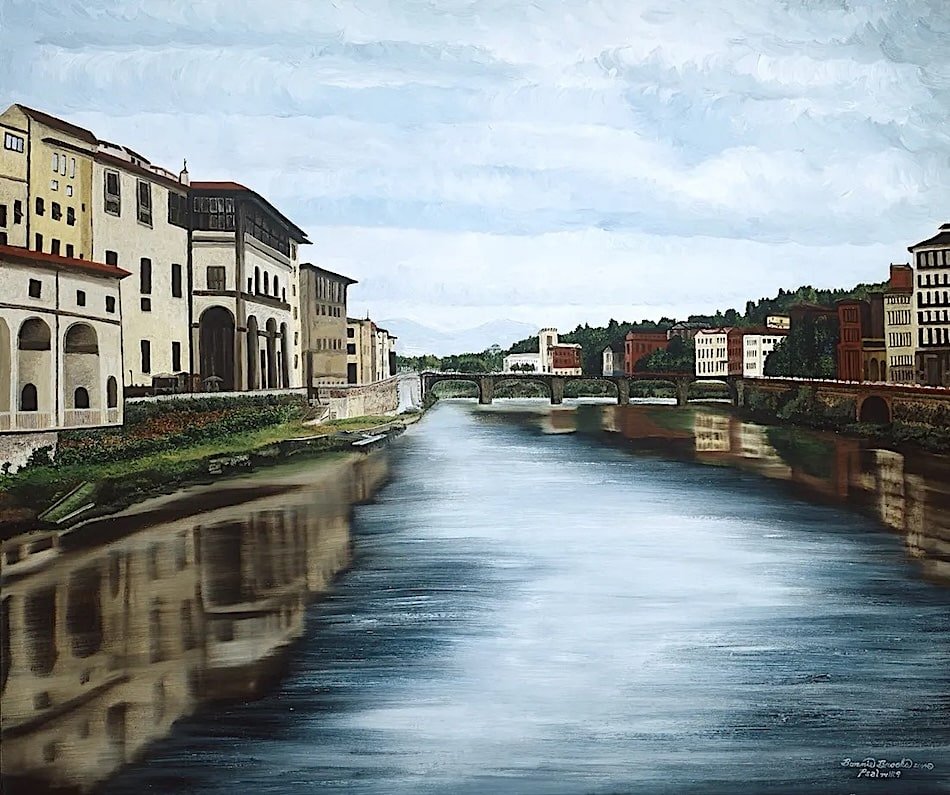
🟥 Do you listen to music while creating, and how does it influence your process?
I listen to praise and worship music while I am painting. This is very important to me when I am creating, allowing the Holy Spirit to work though me and with me.
🟥 Do you have any specific rituals or routines you follow before starting a new project?
Whether I’m painting realistic landscapes or abstracts, I always start by putting on praise and worship music and spending time in prayer. I want my artwork to speak to people and give them a sense of peace, so this is an important part of my process. It helps me center my heart and mind, inviting God into my work so that it can be more than just paint on a canvas, it becomes something meaningful for others.
🟥 What is the most challenging aspect of creating art, and how do you navigate those?
Distractions are the hardest thing to navigate as an artist. When I’m painting, I don’t want anything to take away from what I’m doing. If I leave and come back, I often don’t feel like I’m in the same place or frame of mind, and that can cause me to paint differently, even changing the texture of how I was painting. To stay focused, I have to be intentional about not answering texts and trying to call people back later if the phone rings.
Time is also one of the biggest challenges. As artists, we have so many things to do beyond just creating, marketing, networking, business tasks — it can be hard to find uninterrupted time to focus on the actual artwork.
🟥 What keeps you motivated during times when creativity feels like a struggle?
When I’m struggling with motivation in one aspect of creativity, I shift to another. If I’m having a hard time with a realistic oil painting, I can go into my other studio and work on acrylic abstracts. If painting isn’t flowing, I might animate an NFT or step outside for a hike and focus on my landscape photography. As an artist, creativity isn’t limited to just one medium, there are so many ways to stay inspired and keep creating.
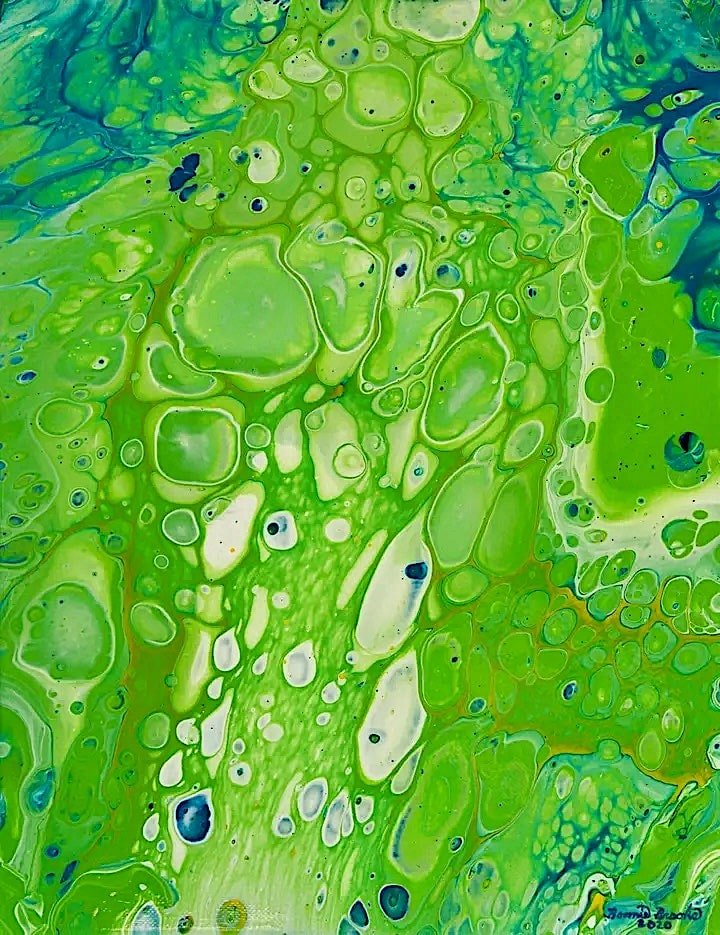
🟥 Do you listen to music while creating, and how does it influence your process?
I listen to praise and worship music while I am painting. This is very important to me when I am creating, allowing the Holy Spirit to work though me and with me.
🟥 Do you have any specific rituals or routines you follow before starting a new project?
Whether I’m painting realistic landscapes or abstracts, I always start by putting on praise and worship music and spending time in prayer. I want my artwork to speak to people and give them a sense of peace, so this is an important part of my process. It helps me center my heart and mind, inviting God into my work so that it can be more than just paint on a canvas, it becomes something meaningful for others.
🟥 What is the most challenging aspect of creating art, and how do you navigate those?
Distractions are the hardest thing to navigate as an artist. When I’m painting, I don’t want anything to take away from what I’m doing. If I leave and come back, I often don’t feel like I’m in the same place or frame of mind, and that can cause me to paint differently, even changing the texture of how I was painting. To stay focused, I have to be intentional about not answering texts and trying to call people back later if the phone rings.
Time is also one of the biggest challenges. As artists, we have so many things to do beyond just creating, marketing, networking, business tasks — it can be hard to find uninterrupted time to focus on the actual artwork.
🟥 What keeps you motivated during times when creativity feels like a struggle?
When I’m struggling with motivation in one aspect of creativity, I shift to another. If I’m having a hard time with a realistic oil painting, I can go into my other studio and work on acrylic abstracts. If painting isn’t flowing, I might animate an NFT or step outside for a hike and focus on my landscape photography. As an artist, creativity isn’t limited to just one medium, there are so many ways to stay inspired and keep creating.
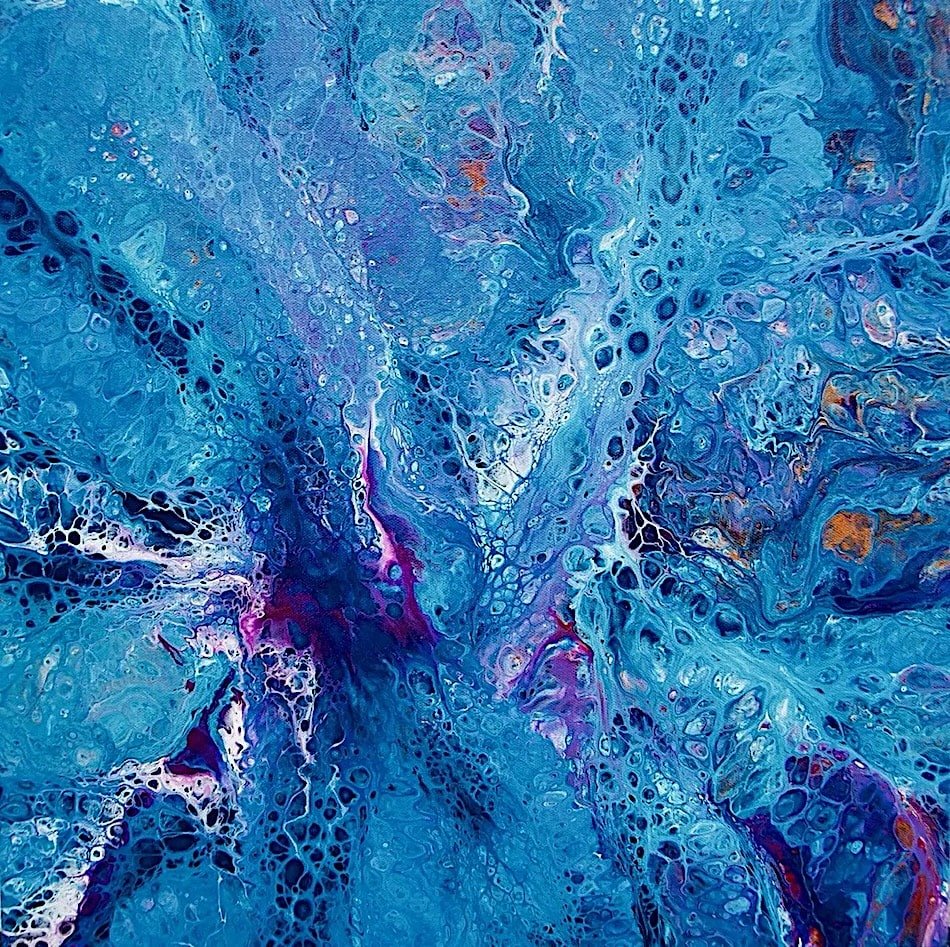
🟥 Can you share an experience or lesson that contributed the most to your growth as an artist?
Becoming an NFT artist and connecting with artists from all over the world has contributed immensely to my growth. Running an X (Twitter) space twice a week for over three years has taught me so much about myself, not just as an artist, but also spiritually. For over 40 years, I created art without strong connections, and through this journey, I’ve realized just how important community is. As an IRL artist, we never really had those kinds of connections, and we often didn’t even know our collectors. But in the NFT space, I’ve found a global network of support, inspiration, and meaningful relationships that have helped me evolve in ways I never expected.
🟥 Is there a piece of advice you received that completely changed the way you create or think about art?
One of the most important pieces of advice I received was that if you’re going to live as an artist, you have to make money, it’s not just a hobby, it’s a career. Right after college, I was mostly a watercolor artist, but when I started trying to get into galleries, I quickly learned that they preferred oil paintings because they could sell them for higher prices. It wasn’t that oil paintings were better, but galleries needed the income just as much as artists do. So, I adapted, I told myself, I can paint in anything you like, and that’s when I started working primarily in oils.
That lesson has stuck with me throughout my career. You have to stay relevant as an artist, which is why I also embraced NFTs. Art is always evolving, and being open to new mediums and markets is key to sustaining a career in this field.
🟥 When you view a piece of art, what qualities or emotions do you look for?
When I look at a piece of artwork, I want to feel peace. I don’t want it to shock me or create anxiety. That doesn’t mean art that evokes those emotions isn’t valuable or well-executed, it’s just not what I would want hanging in my home.
I once had a student who created disturbing images, and other students would ask, Why did he get an A on that? It’s horrible! My answer was always the same: it used the principles I was teaching, was well-executed with great detail and creativity. Art is meant to invoke emotion, but there are many kinds of emotions and ways to express them. For me, I’m drawn to art that brings a sense of calm and reflection.
🟥 How do you perceive art’s purpose and its impact on individuals and society?
Art is history, whether it’s a landscape painting or a photograph capturing a moment in life. It impacts our daily lives, often in ways people don’t even realize. From the way we decorate our homes to the cars we drive, everything is created by artists. Every product, every design, from a dining room chair to the smallest part of a car, had to be drawn first. Not many people think about that, but I used to teach mechanical drawing, so I’ve always understood how art is at the foundation of everything around us. Art isn’t just about beauty, it shapes culture, preserves history, and influences the way we experience the world.
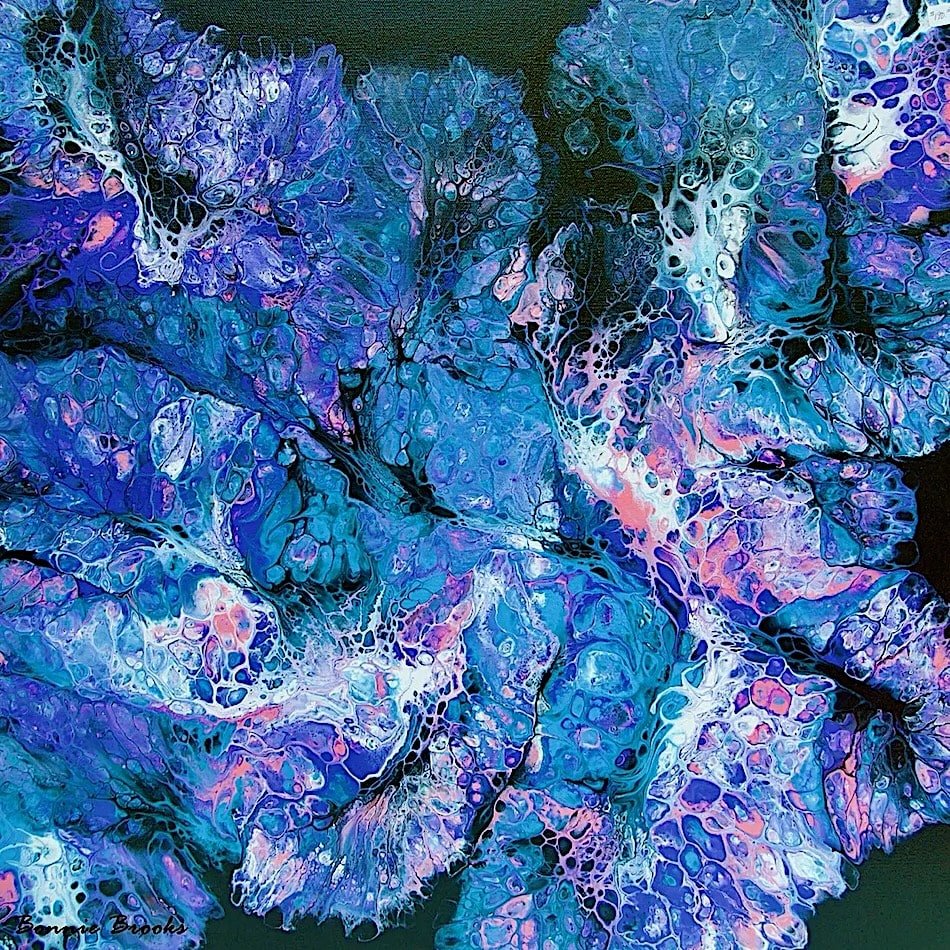
🟥 In your view, what do concepts like “passion” and “uniqueness” represent in art?
Passion and uniqueness are embedded in every piece of art. Every time an artist creates and sells a piece, a part of them goes with it. No two artists are the same, everyone brings their own perspective, experiences, and emotions into their work. That’s why having an artist community, whether IRL or in the NFT space, is so valuable. Artists thrive when they’re surrounded by other artists — not as competition, but as support. I’ve seen this firsthand. I once had a collector describe an abstract sunset he wanted, and I knew of an artist who specialized in that style. I told him to check out their work, but in the end, he didn’t connect with that artist. He still wanted me to create it. That experience showed me that art isn’t just about the piece itself, it’s about the relationship between the artist and the collector, the passion behind the work, and the unique connection it creates.
🟥 What are the non-negotiable essentials in your workspace?
You must have good lighting in your workspace, music and lots of paper towels!
🟥 Do you have a favorite tool or object in your studio that holds sentimental value?
I could not find a large enough easel for my canvases so my Dad handcrafted one for me out of wood with a beautiful cherry stain. He also made me a slotted cabinet to hold my finished paintings.
🟥 What’s the one thing you always need by your side while creating art?
When creating realistic oil paintings, I always need my photos by my side. As someone who used to teach photography and even had my own darkroom, I take tons of photographs throughout the day to capture just the right lighting. Those images are essential in the studio, helping me render landscapes as accurately as possible and bring my vision to life on the canvas.
🟥 Who are the artists or people you admire the most, and why?
The artist I admire most is Andrew Wyeth, whose skill and dedication to precision through layers of paint have always inspired me. I had the incredible chance to visit the home in Maine where he spent his summers painting, which felt like stepping into his creative world. Equally thrilling was my trip to the Wyeth Museum, where I could see not only Andrew’s work but also the remarkable art of his father, N.C. Wyeth, and his son, Jamie. Their collective talent and legacy left a lasting impression on me.
🟥 Imagine you could create a piece of art in collaboration with someone from history. Who would you choose and why?
If I could collaborate with someone from history, I’d choose Andrew Wyeth without hesitation. The opportunity to work alongside him would be incredible — I can’t even imagine how much I’d learn from his precision and dedication to detail. His ability to capture accuracy in every brushstroke would push me to refine my own skills, making it a dream collaboration for any artist like me who values realism and depth.
🟥 What’s your superpower?
My superpower is intercessory prayer, being filled with the Holy Spirit, and knowing that I can do all things through Jesus. My faith empowers me to create meaningful art that inspires, comforts, and brings hope to others.
🟥 What does success as an artist mean to you — recognition, impact, or something else entirely?
Success as an artist includes many things. Using my gift to glorify God, offering encouragement to others, and making art that brings peace and beauty into the world — while also sustaining myself through my art. This includes a variety of things such as selling artworks, commissions, or digital pieces and generating income through prints, merchandise, and teaching. Building a brand and audience that supports my art.
🟥 Can you tell us about a piece of your art that holds a special place in your heart and why it’s so meaningful to you?
Appalachian Resort (or Winter Landscape NFT) holds deep personal meaning because it captures the joy and beauty of a cherished ski trip with your son and friends. The memories of that time — laughing together, feeling the crisp mountain air, and witnessing the breathtaking scenery — are all woven into the artwork. This piece isn’t just about a landscape; it’s a reflection of gratitude and the fleeting, precious moments we get to experience with loved ones.
🟥 What are your dreams or goals for the future?
My dream as an artist is to continue growing and expanding my reach, sharing my work with a wider audience. I want brooksgallery.com to become a thriving space where people can experience and collect my art, whether it’s my detailed landscapes, expressive abstracts, or even digital and NFT creations.
Travel has always been a huge source of inspiration for me, and I’d love to explore more places, capturing their beauty in my paintings. I also feel a pull toward sharing my journey, maybe through mentoring or even writing about my experiences in art and faith.
Above all, I want my work to continue bringing peace, inspiration, and encouragement to others. Whether in a home, a gallery, or a digital space, I want my art to make the world better, one painting at a time. I trust that God will guide my path, and I’m excited to see where it leads!
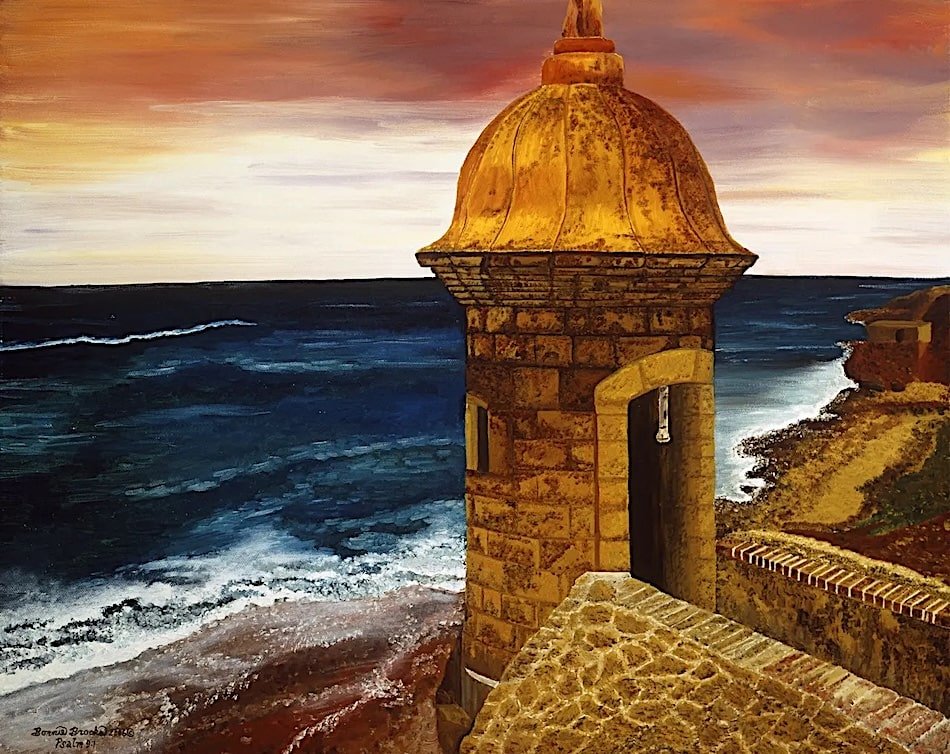
🟥 How would you define a “creative person”?
A creative person is someone who uses imagination, originality, and problem-solving skills to generate new ideas, expressions, or solutions. Creativity can manifest in many forms, art, music, dance, writing, innovation, design, and even everyday problem-solving. It is open to inspiration from various sources, including emotions, nature, faith, or life experiences. I try to blend skill, passion, and faith to bring beauty and deeper meaning into the world through art.
🟥 In your opinion, what are the positive and negative differences between being an artist today and being an artist a century ago?
I have been an artist for over 40 years and it has never been easy. Artists today have more tools, freedom, and ways to connect with the world than ever before, but they also face more competition, distractions, and pressures. A century ago, art was more respected as a craft, but it was also harder to break into the industry without the right connections.
🟥 In your opinion, what are the best and most challenging aspects of being an artist?
Artists can sell their work in many ways, NFTs, prints, commissions, crowdfunding, online courses, merchandise, and licensing, beyond just galleries or private collectors. Artists can build their own brands, interact with collectors directly, and promote their work without relying on galleries or agents. Even just a few years ago I could not do this. The galleries kept you away from the collectors. Now they want to know the artists and they have met the artist events. With millions of artists online, standing out is harder than ever. The sheer volume of content can make it difficult to get noticed. Artists today must be their own marketers, social media managers, and businesspeople, often taking time away from creating. Because of mass production, prints, and AI-generated images, original works are sometimes undervalued, making it challenging to sustain a career.
🟥 What advice would you give to aspiring artists who want to build a meaningful career?
To build a meaningful career as an artist, focus on mastering your craft and creating with authenticity. Develop a strong portfolio that shows your unique voice and purpose, whether through traditional or digital mediums. Understand the business side of art, pricing, marketing, and multiple income streams, to sustain your practice. Utilize social media and online platforms to connect with a global audience, while also networking with other artists and galleries. Stay resilient through criticism and rejection, setting achievable goals to keep growing. When I was in college you had to have a thick skin because the professor would tear apart your work for you to learn. It was hard but understand that not everyone is going to like your art. Keep creating, stay true to your vision, and your art will find its place in the world.
Relevant Links:
Web Site: brooksgallery.com
Twitter: x.com/Brooksgallery8
Instagram: instagram.com/brooksgallery
Foundation: foundation.app/@brooksgallery
Links: linktr.ee/brooksgallery
Note: The answers given by the artist have been quoted verbatim without any editing to preserve the artist’s authentic voice for our readers.



